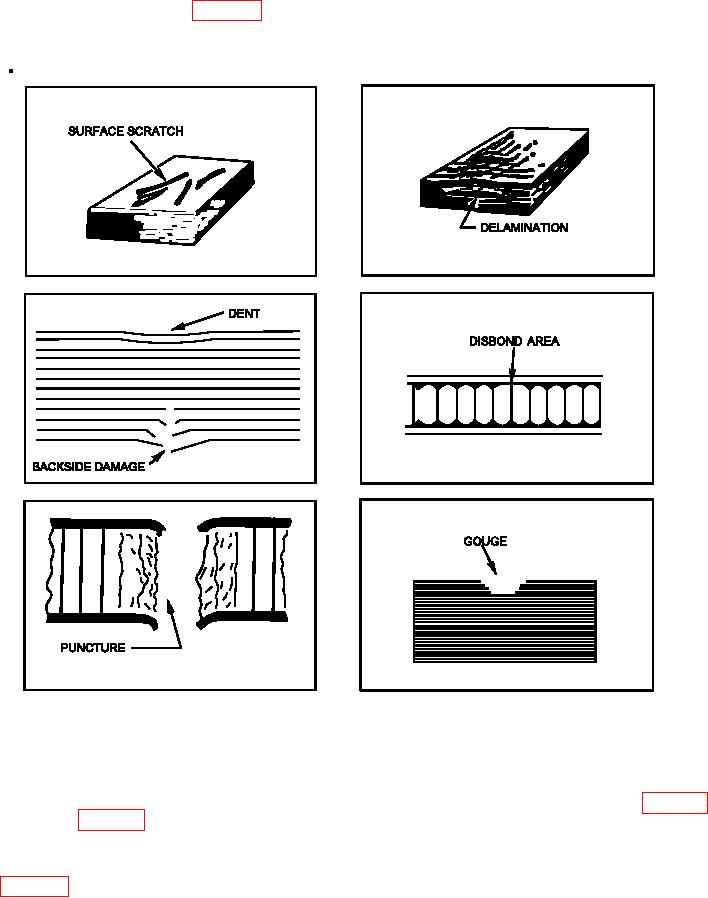
TM 1-1500-204-23-11
5-3. DAMAGE TYPES. Composite structures can be
materials either resist an impact force and spring
damaged in many ways. Damage type must be
back or rupture. Due to the brittle nature of most
identiied to determine a repair scenario. Six typical
composite materials, these ruptures can occur at rather
types of defects are described in igure 5-4. Damage
low impact energies. The damage resulting from a
incurred by composite materials is quite different than
rupture produces cracks in the matrix, delaminations
that experienced by metallic materials. Composite
between plies and broken ibers.
materials do not deform like metals. Composite
Figure 5-4. Types of Defects
a. Gouges. Partial thickness damage that results
c. Delaminations. Delamination is the separation
in outer ply splintering, broken/removed ibers and
of plies caused by impact, excessive heat, or inclu-
delaminations and the laminate has not been fully
sion causing a void in the material (see igure 5-4).
penetrated (see igure 5-4).
Impact related delaminations tend to occur at multiple
depths throughout the thickness of the laminate. They
consist of inter and intraply matrix cracks which are
b. Surface Scratch. A surface scratch does not
not always interconnected. Subsurface delaminations
damage ibers or the internal structure of a composite
and matrix cracks can exist without any indication
(see igure 5-4). Repair of such damage usually
on the part surface. Laminates subjected to or sus-
requires only blending or reinishing.
pected of having been subjected to impacts from

